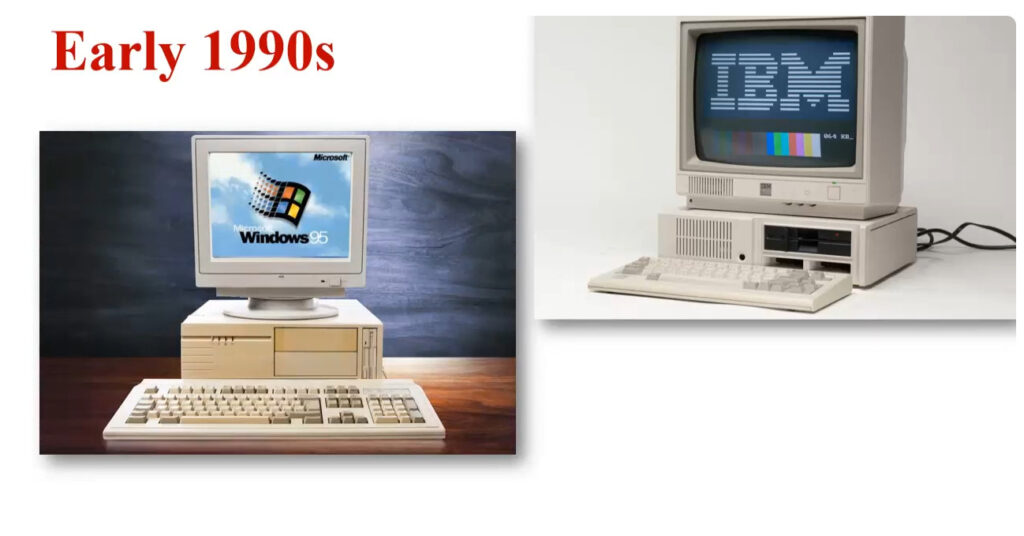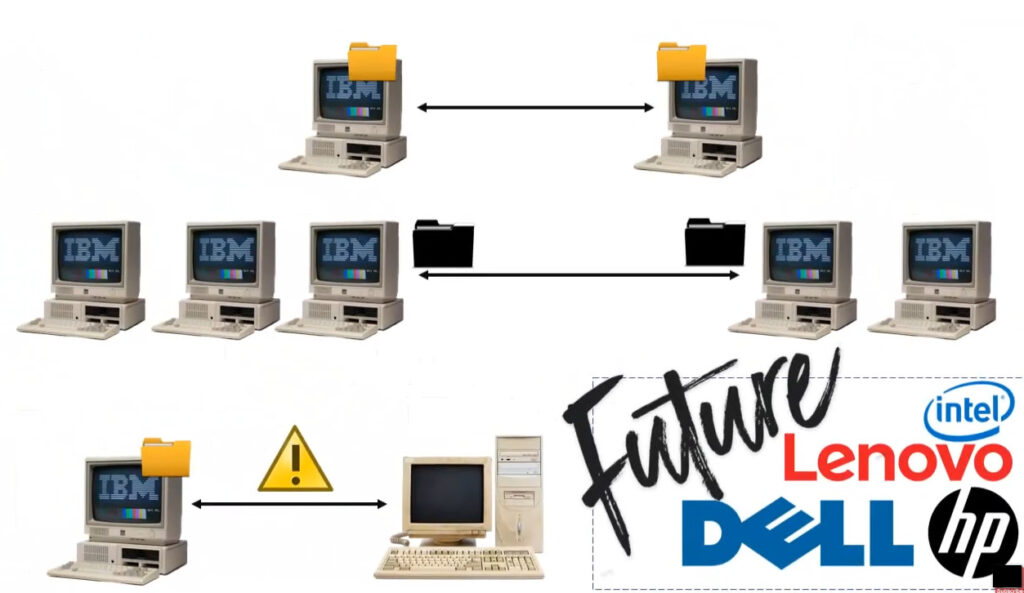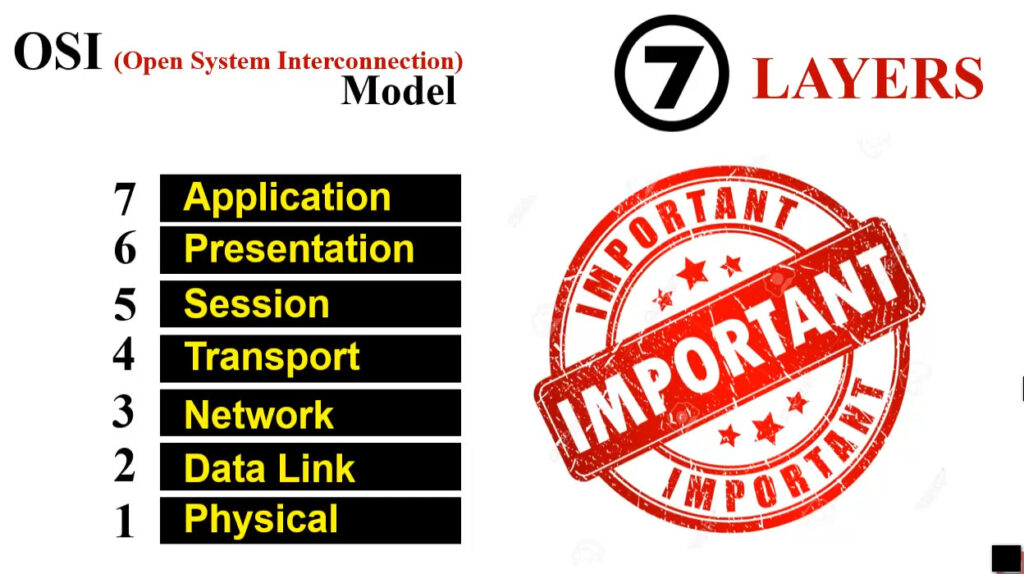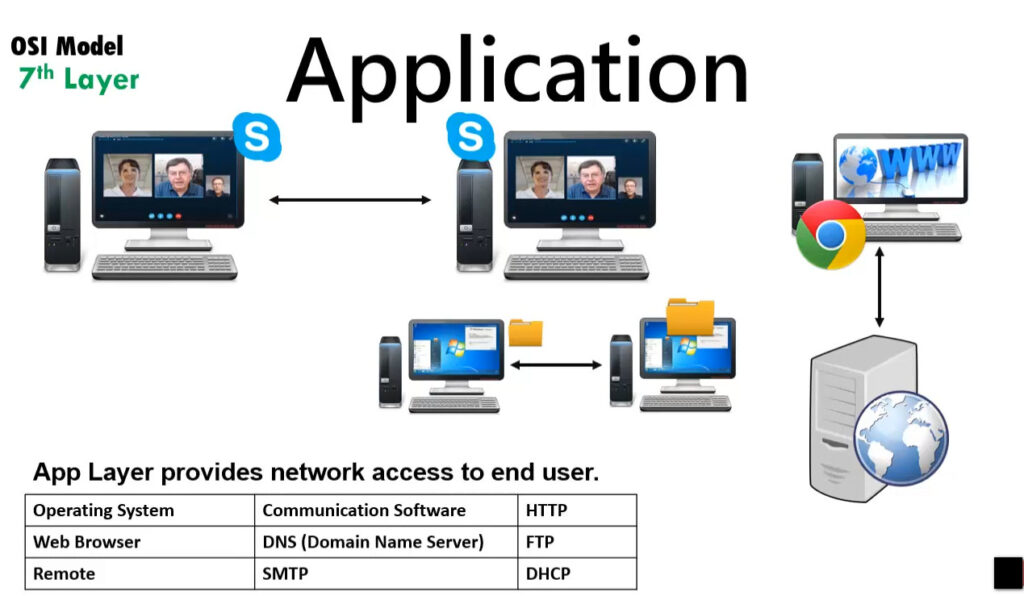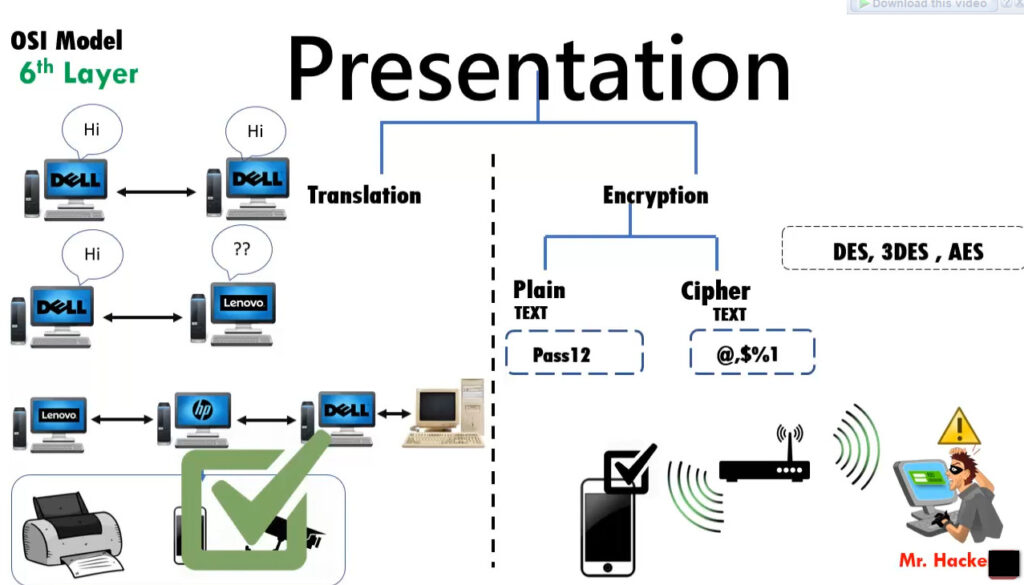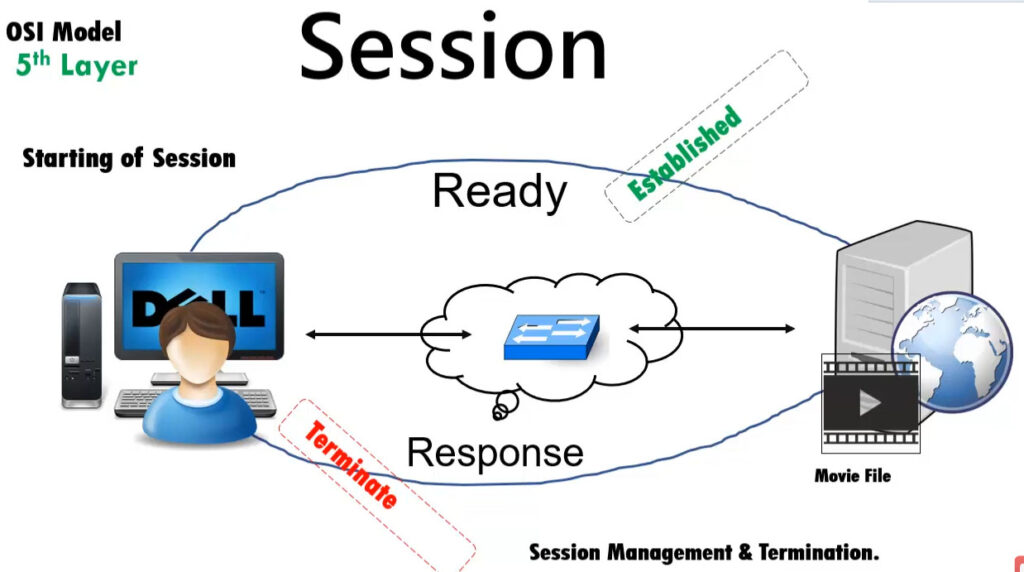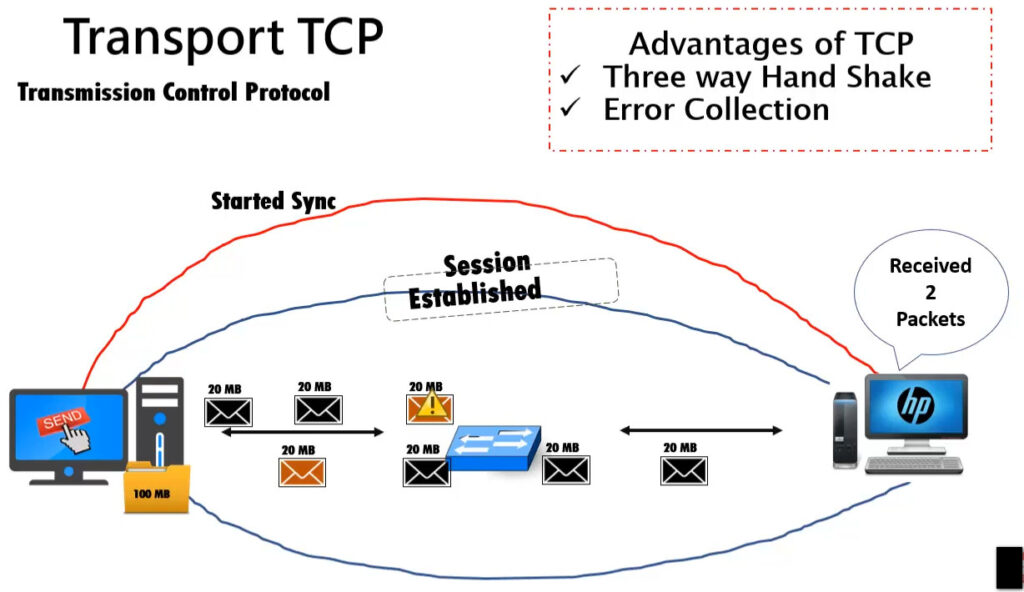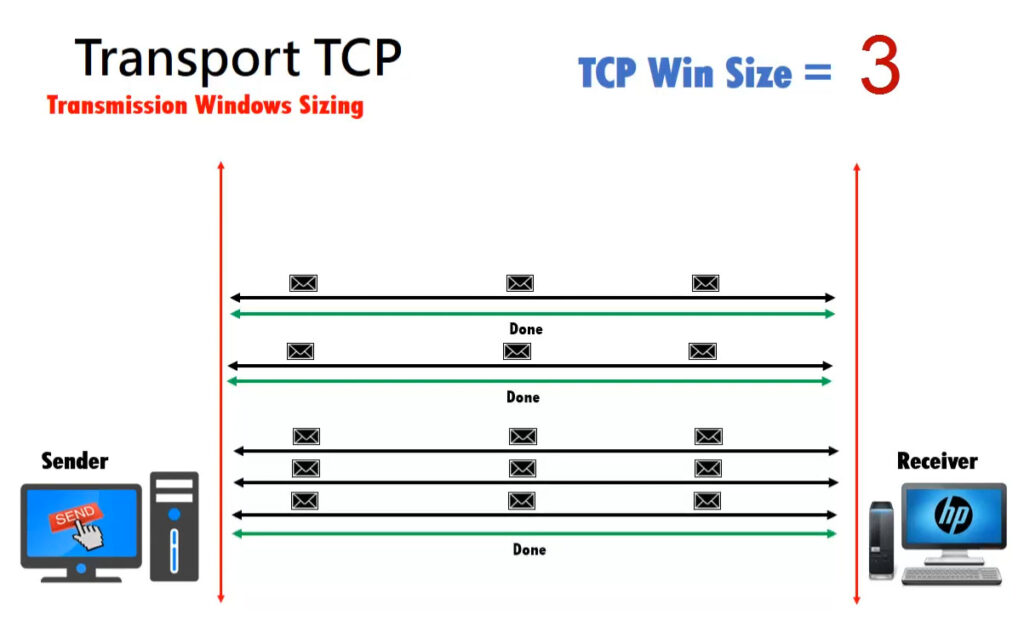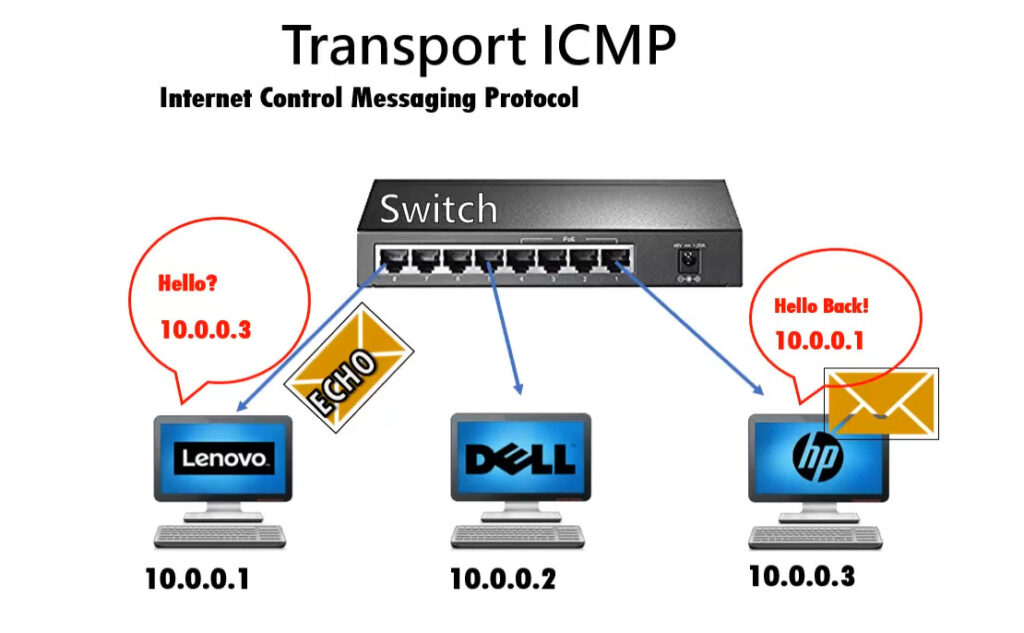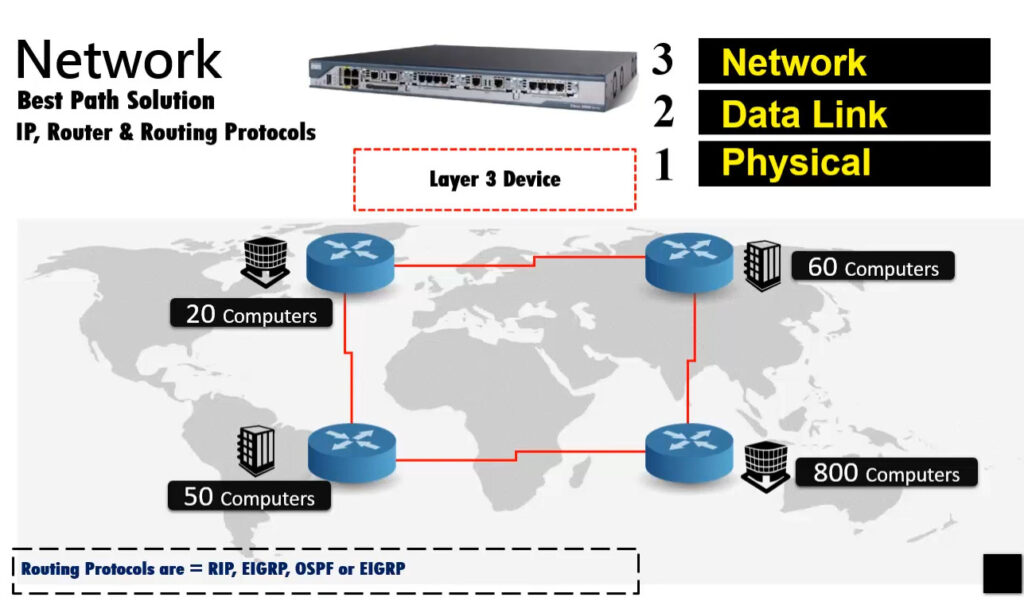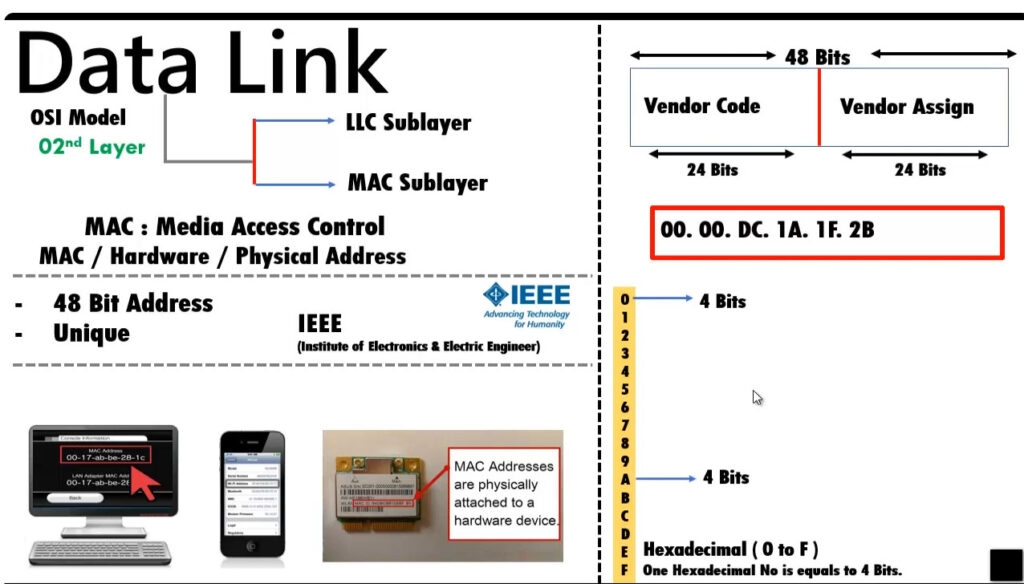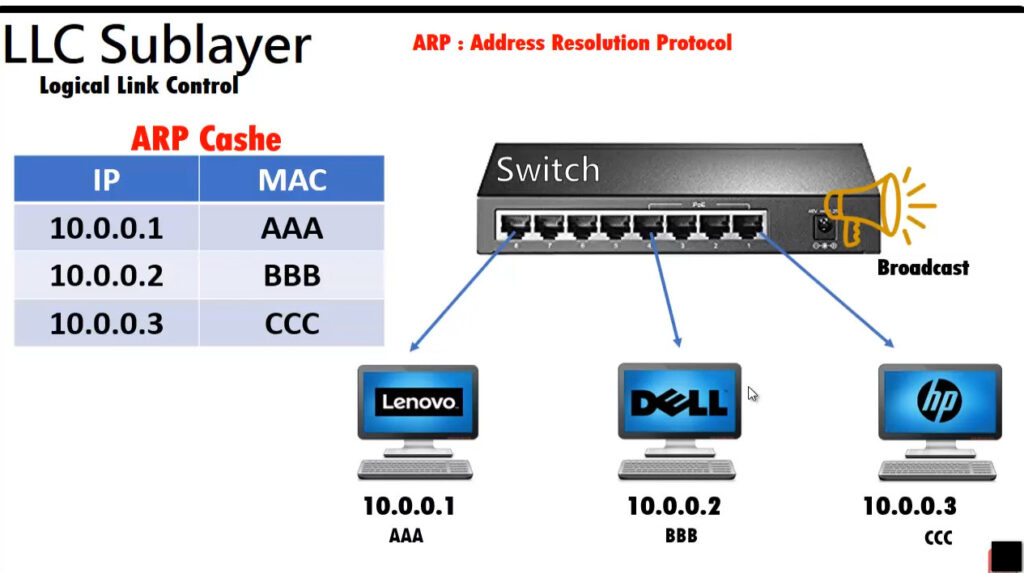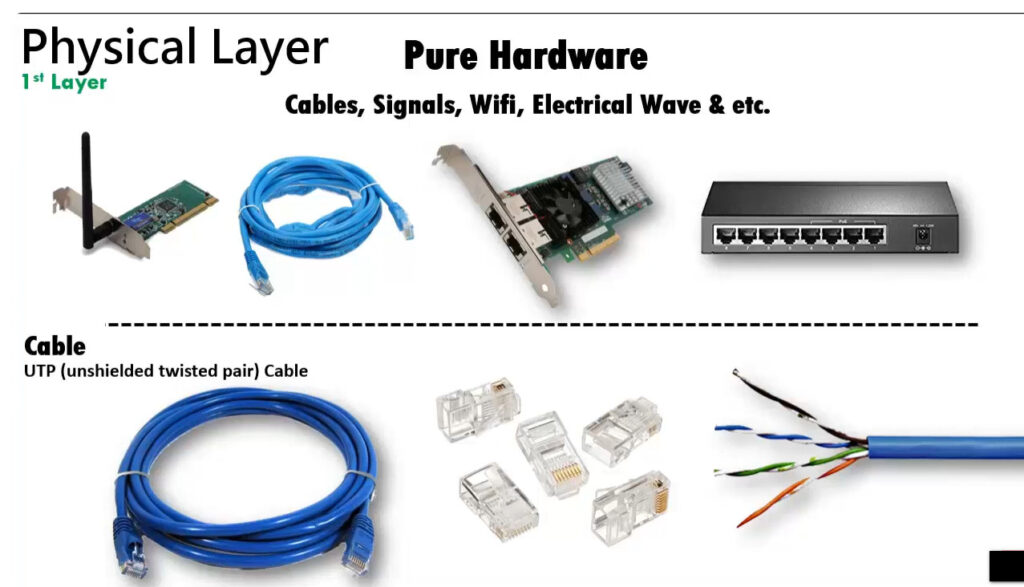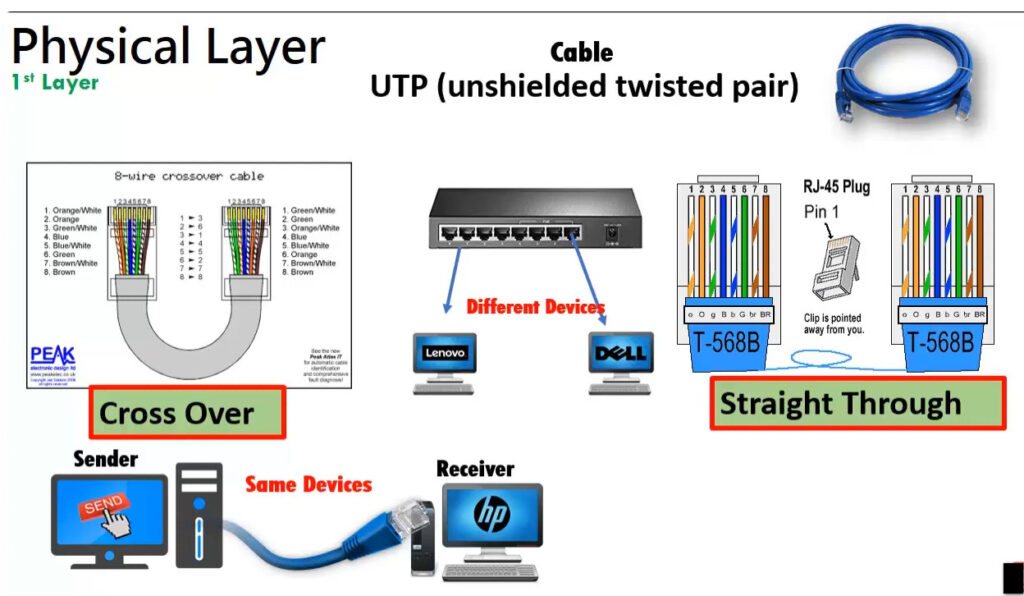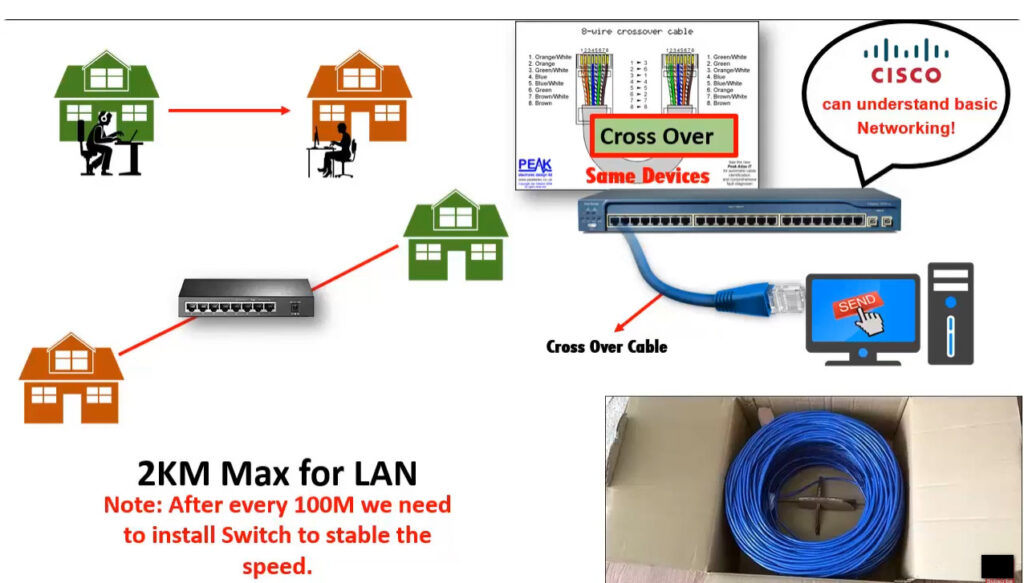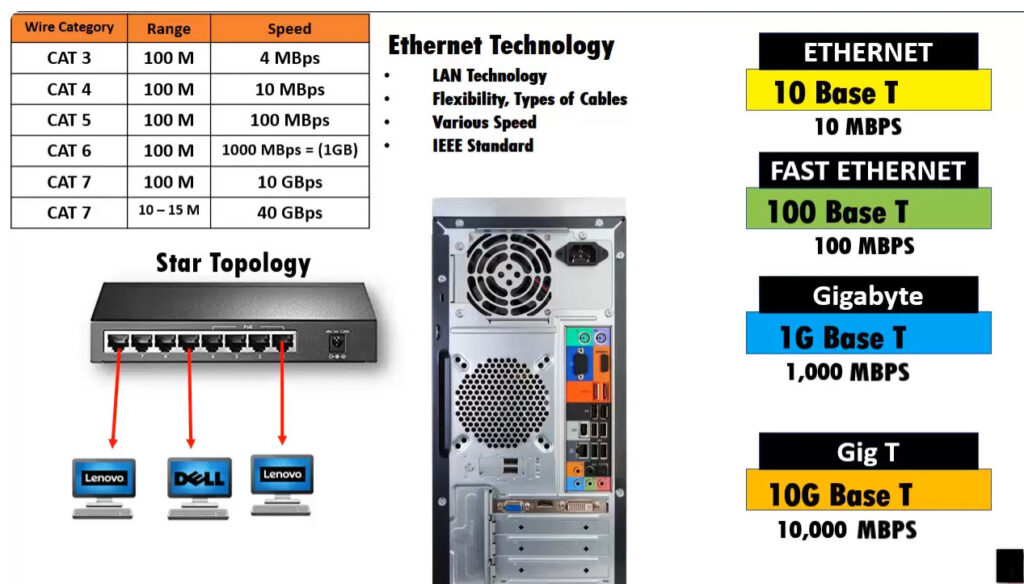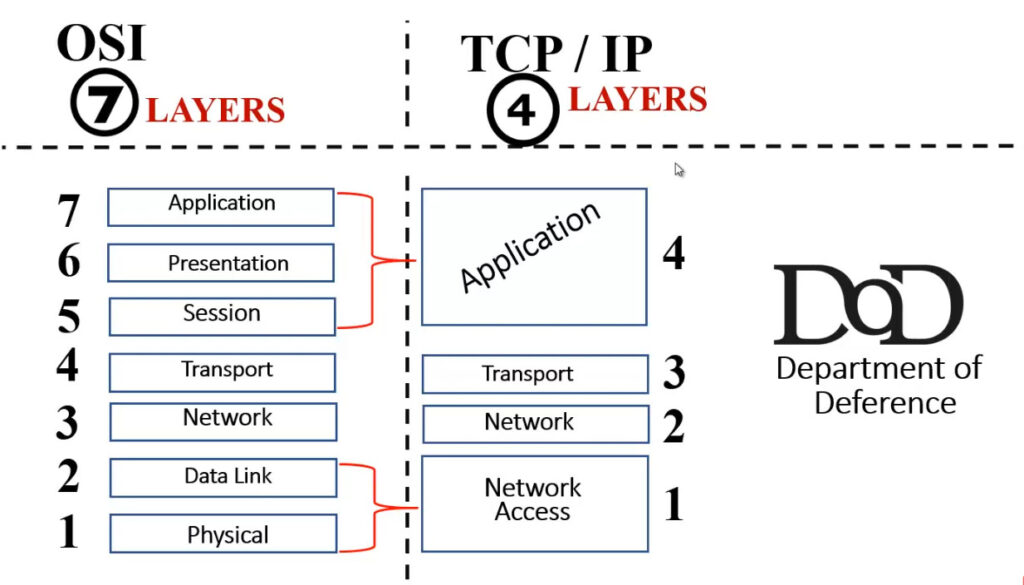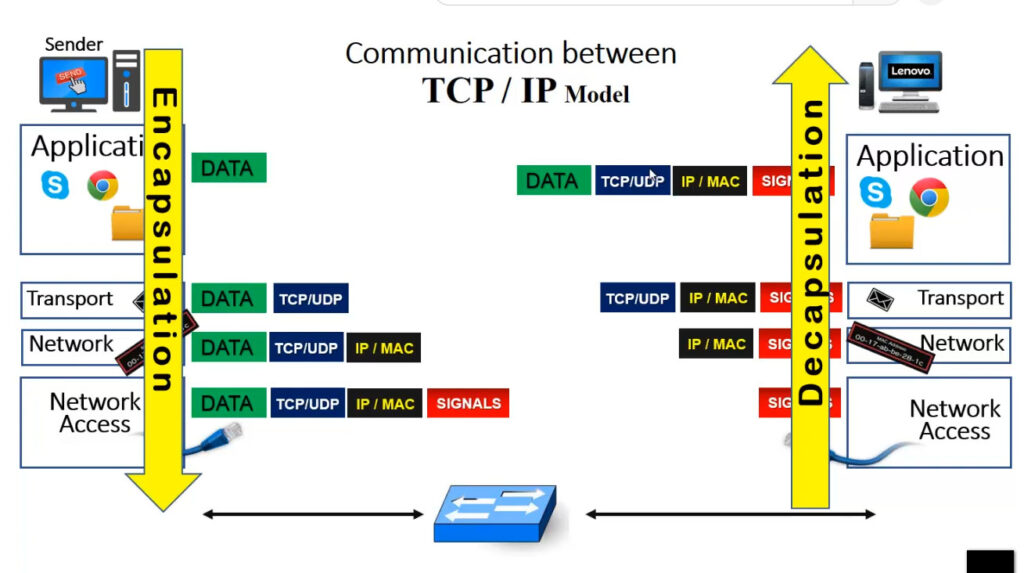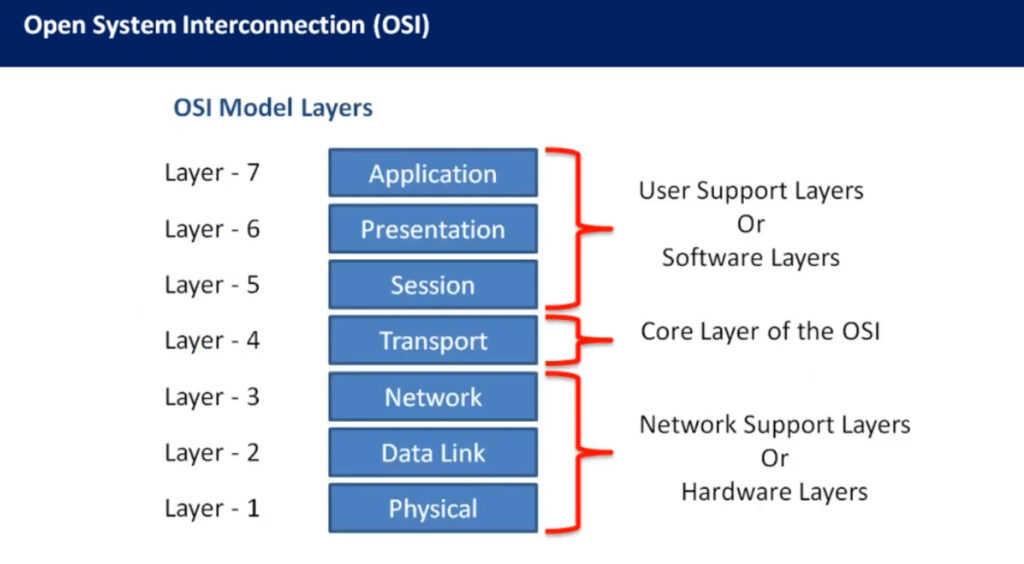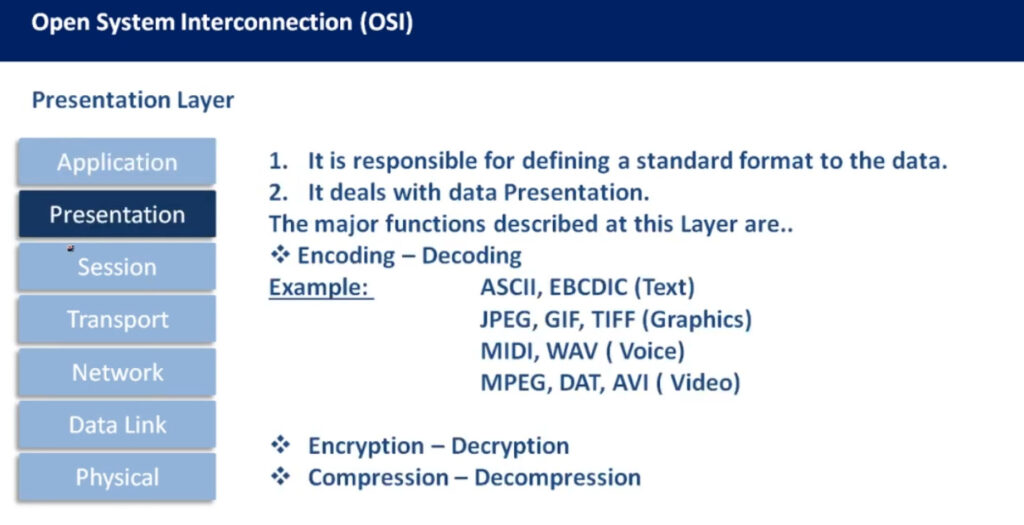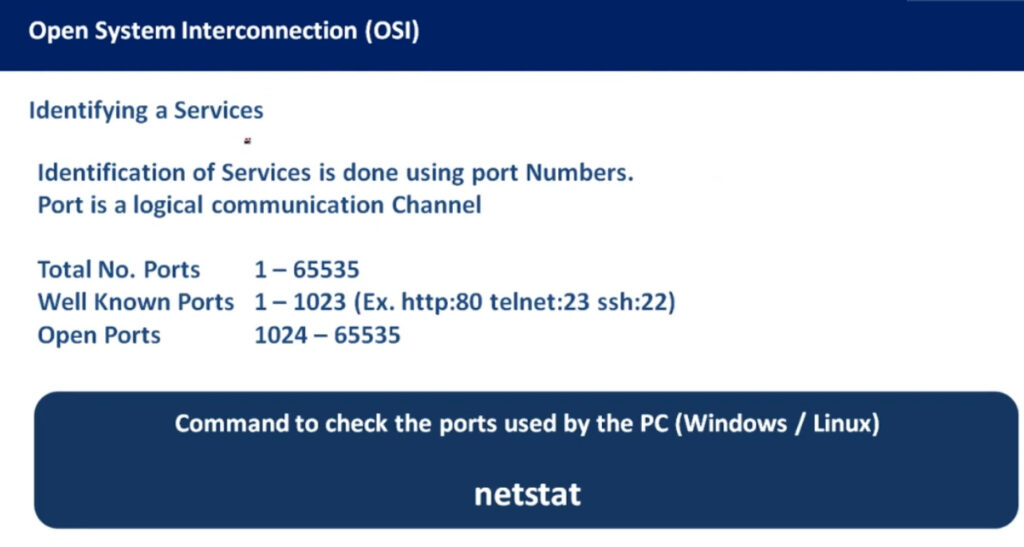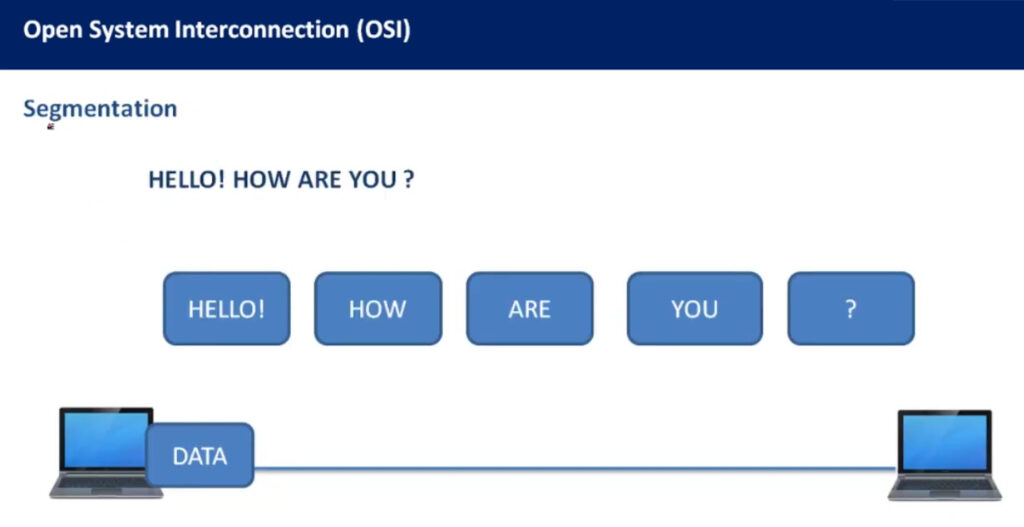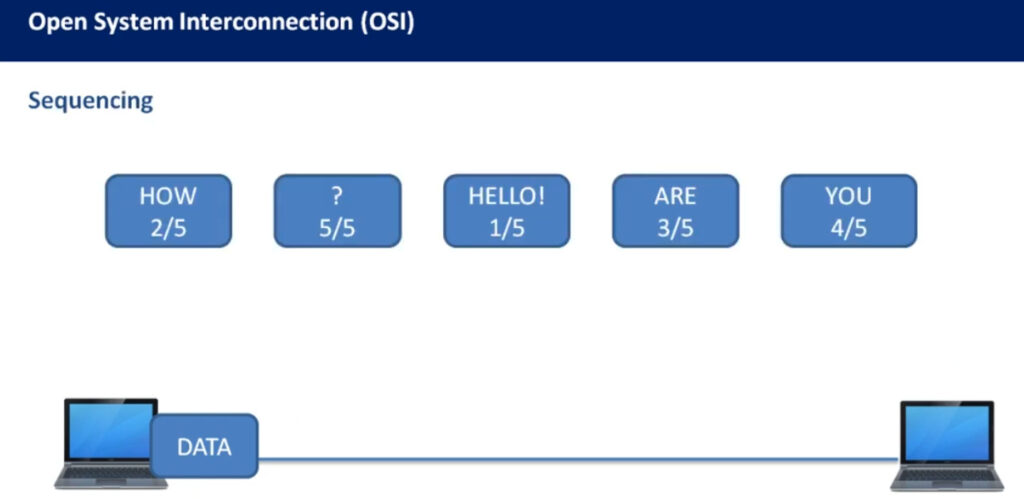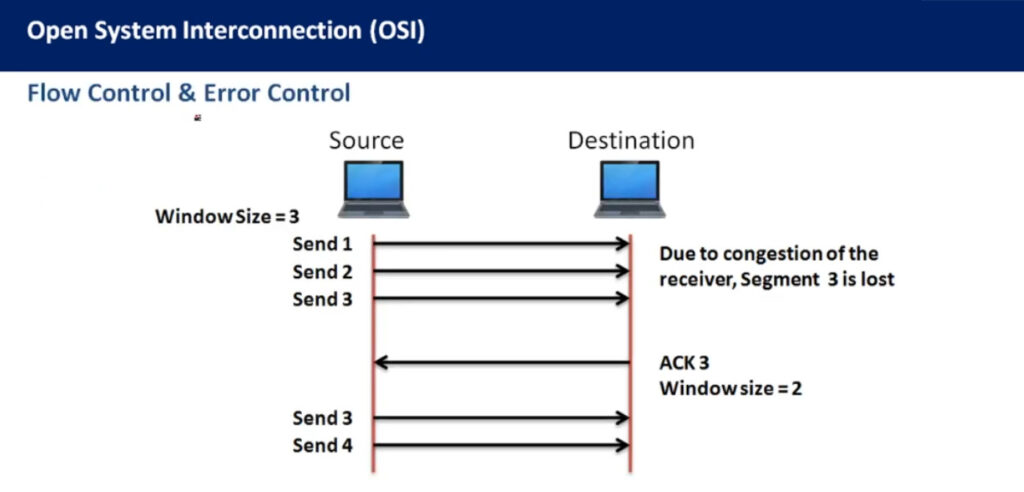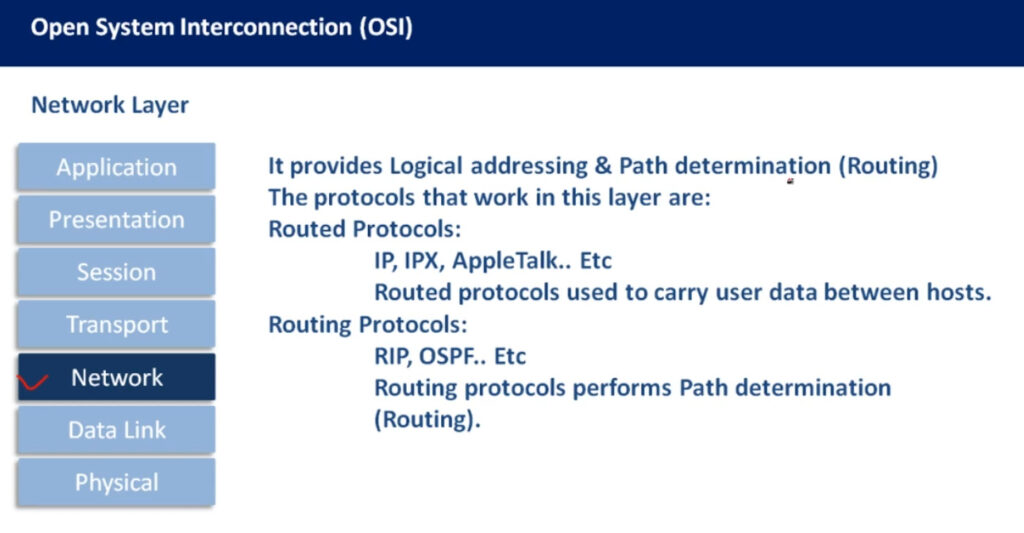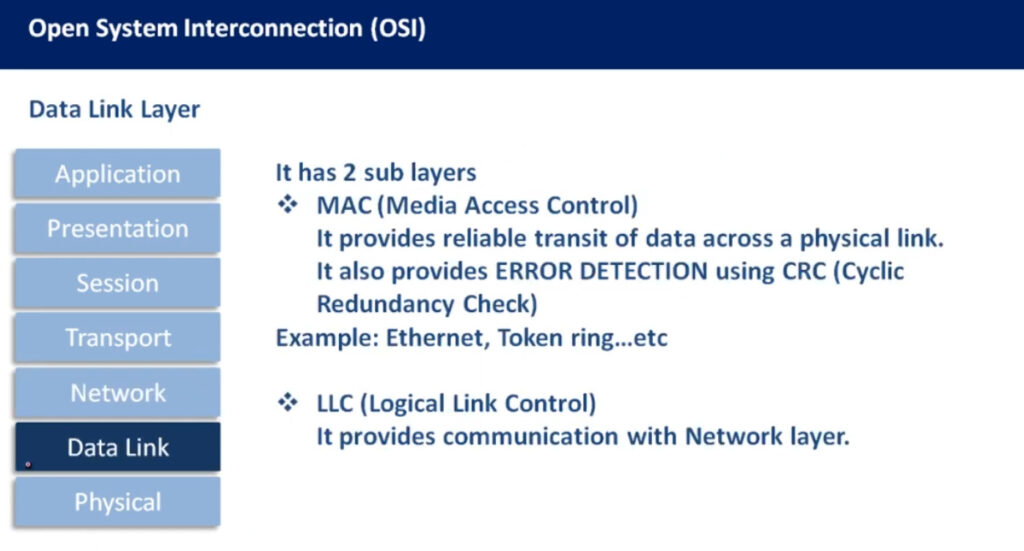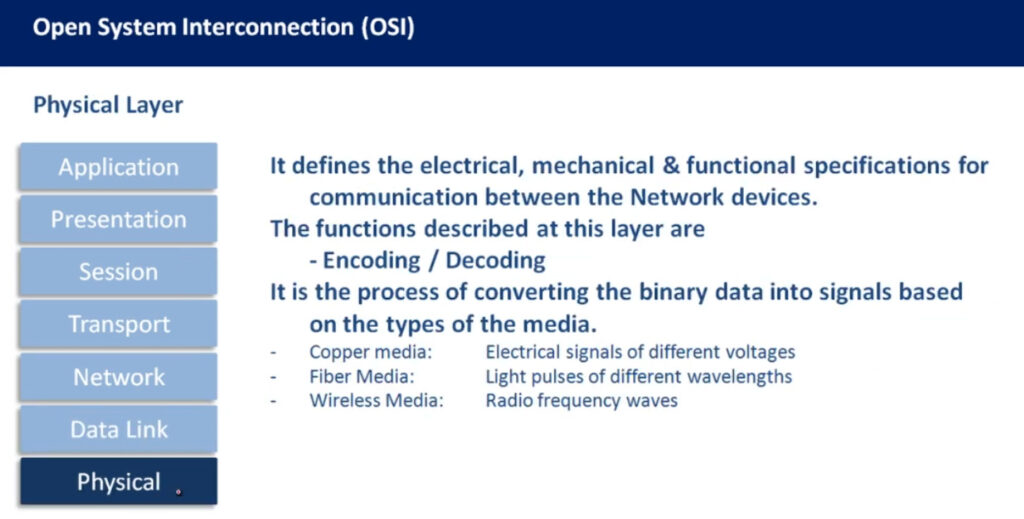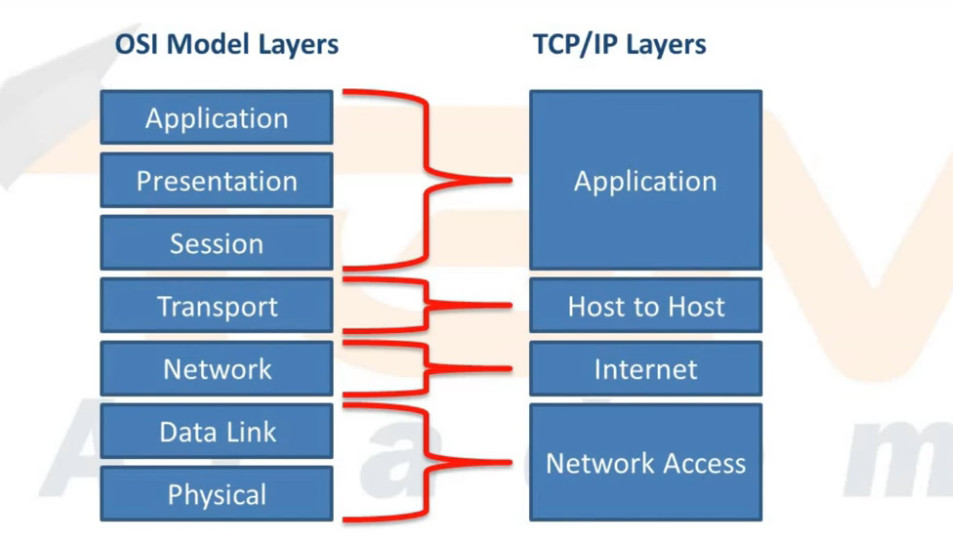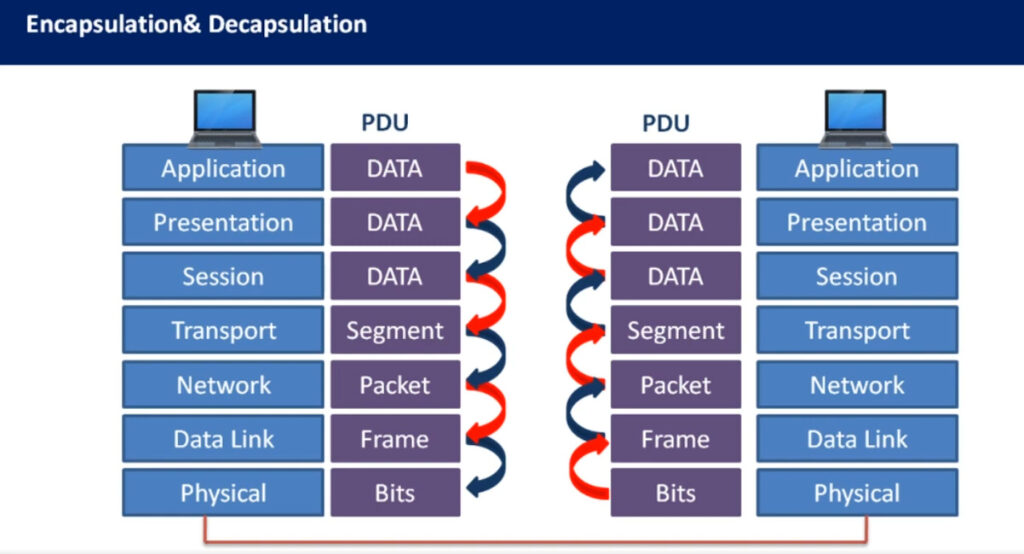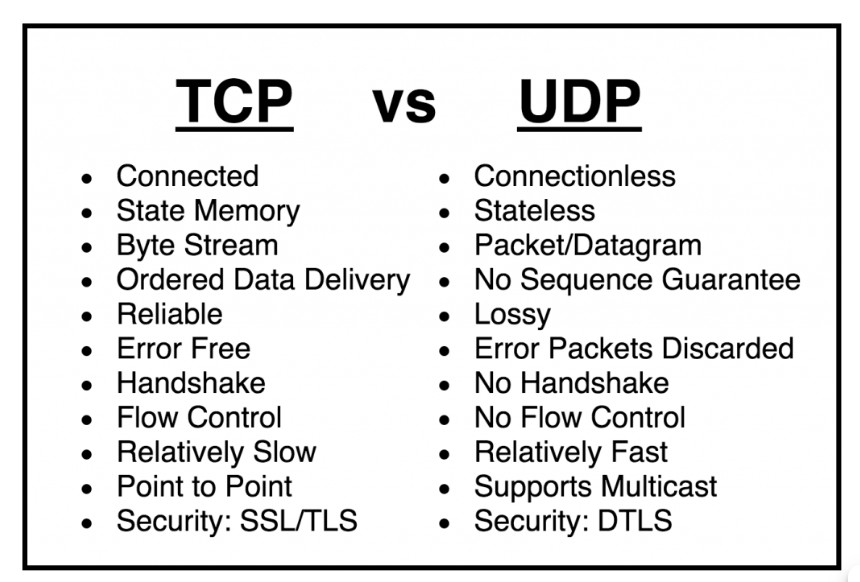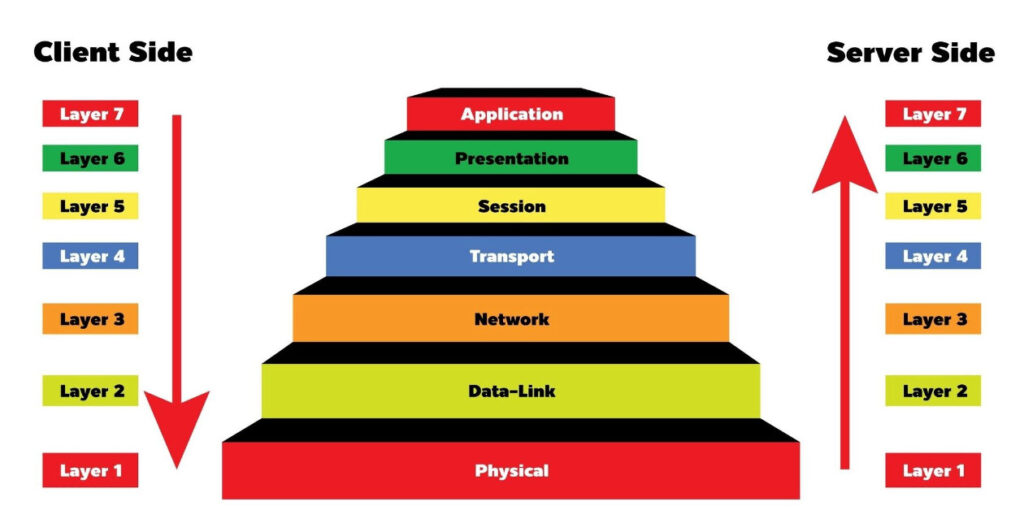- 8777701917
- info@saikatinfotech.com
- Basirhat W.B
The OSI (Open Systems Interconnection) model is a conceptual framework used to understand and standardize how different network protocols interact and work together in a communication system. It divides network communication into seven distinct layers, each responsible for a specific aspect of data transmission. This model helps to isolate and troubleshoot issues at each layer of the network, allowing for more effective management and understanding of how networks operate.
Layer 1: Physical Layer
Layer 2: Data Link Layer
Layer 3: Network Layer
Layer 4: Transport Layer
Layer 5: Session Layer
Layer 6: Presentation Layer
Layer 7: Application Layer
The TCP/IP model (also known as the Internet Protocol Suite) is another conceptual framework for understanding how networking protocols work, and it is the model on which the modern internet is built. While both the OSI and TCP/IP models serve a similar purpose, the OSI model is more detailed and includes seven layers, while the TCP/IP model has only four layers:
Each layer of the OSI model is associated with specific protocols and technologies that handle communication for that layer:
The OSI model is a conceptual framework that defines seven layers to describe how data travels through a network. Each layer has specific responsibilities, starting from the physical transmission of raw bits (Physical Layer) to providing network services to end-users (Application Layer). Understanding the OSI model helps in diagnosing network problems, implementing protocols, and designing networks effectively.
